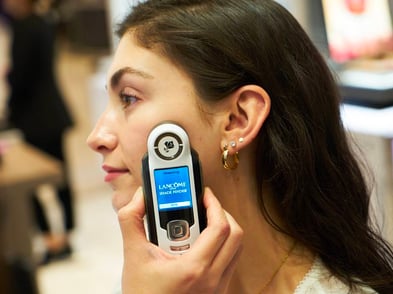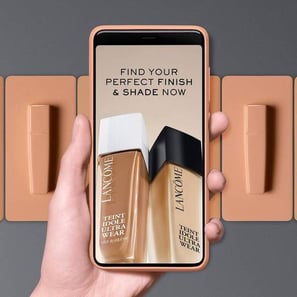Not too long ago, direct-to-consumer (DTC) brands were the infamous disruptors of the CPG industry and the darlings of the VC community. They swooped in and shook up long-established categories from razors to mattresses, stealing significant market share from major incumbents like Unilever and P&G.
Today these same brands are at the mercy of skyrocketing customer acquisition costs, global economic headwinds, global supply chain disruptions, and a major pullback in VC investment, many DTC brands are struggling to find sustainable growth (or just keep the doors open). Meanwhile, big brands and retailers armed with capital and resources have been playing catch up and established their own online presence, meaning DTC companies no longer have that unique proposition they once held.
So is DTC dead? Or are we at the turning point of a glorious comeback story? To answer this let's start by breaking down the current state of direct-to-consumer brands and why now is a pivotal moment for the next chapter of the great DTC story.
DTC startup brands get a post-pandemic reality check, category leaders cash in
Covid-19 had a major effect on all our lives, but not many industries have experienced the aftermath quite as huge as the e-commerce sector in general and the DTC market in particular. Practically overnight, people had to abandon their shopping habits propelling the widespread of e-commerce and overall market digitalization. E-commerce sales increased by $244.2 billion after the pandemic and DTC sales accounted for $18 billion of those shares.
Fast forward to today and the e-commerce rush driven by Covid is officially over with online retail share has returned to the pre-pandemic levels. In 2022, stocks on some of the biggest DTC brands plummeted by nearly 65% while the costs of advertising skyrocketed.
And if it wasn’t enough, the pre-pandemic levels of competition have returned as well with established brands embracing the DTC approach. Corporations now view DTC as an important aspect of their omnichannel strategies based on the popular premise of “be everywhere where your customer is.” In fact in 2022 the majority of DTC e-commerce sales (76%) came from established brands, not growing startup incubants.
A new playbook for a new paradigm
In the 2010s, there was a simple playbook for DTC success that typically relied on picking a sleepy category, creating a simple product, a lot of pastels, and a ton of Facebook advertising.
Today’s reality is quite different. The brands that still leverage DTC as an effective channel for growth are ushering in a new DTC 3.0 era and a new playbook. Ignoring traditional category boundaries, tapping into the power of community, and early adoption of Web3 strategies are just a few of the tactics for this next generation of DTC disruptors.
DTC 1.0 |
DTC 2.0 |
DTC 3.0 |
|
Early 2010s The original disruptors burst on the scene in 2010, disrupting categories that have long been dominated by legacy brands. The formula was simple: 1) build a pretty brand 2) run pretty ads on social media 3) make lots of money. |
Mid 2010s Market saturation in many categories as well as wave of acquisition. Brands turned to personalization and services to stand out. |
Today (2023) This era represents sustainable growth and profitability, with disruptor brands ignoring the DTC playbook of the past, not seeking VC investment, and emphasizing the customer experience before everything. |
|
|
|
DTC 3.0 is here with a new generation of brand innovators leading the way
As the DTC model continues to evolve, so do the brands. The new approach goes beyond simply bypassing traditional channels and instead focuses on creating an authentic and holistic experience across multiple touchpoints. Numerous innovative brands are already embracing the power of DTC 3.0, revolutionizing how they connect with today's discerning consumers.
Mondelez Uses DTC to Deliver Unique Experiences that Can’t Be Delivered in Store
.png?width=1600&height=910&name=unnamed%20(3).png)
Mondelez is committed to driving 20% of sales from digital commerce by 2030. For them, DTC is a way to deliver differentiated experiences that can only be done, well, directly to consumers.
OreoiD demonstrates the company’s commitment to DTC-led differentiation and allows customers to build personalized Oreos available for pickup at nearby retailers and pickup points, including Walmart and Amazon.
L’Oreal Commits to DTC as Part of its Omnichannel Distribution Strategy


As of 2023, L’Oreal has been successfully utilizing digital commerce
and is already driving 28% of sales from e-commerce.
For them, DTC is part of a “multipolar” distribution strategy that also combines the power of its owned-and-operated stores with its e-commerce channels allowing L’Oreal’s brands to offer products and services across physical, digital, and virtual consumer touchpoints. And if there is one thing L’Oreal delivers better than any beauty brand, it’s personalized experiences that bridge online and offline.
For example, Lancome E-Shade Finder is an AI-powered online and in-store service that takes a 360-degree video of your face and analyzes your skin tone, measuring it against 22,500 tones in the Lancôme database. It then provides the best foundation shade option out of 45 shades to find the best one for you. That is just one of the dozens of personalized advisor services that L’Oreal uses to keep shoppers coming back to its brand websites and its in-store counters.
Athletic Greens Leads DTC 3.0 Evolution from Micro to Macro with AG1
.png?width=1084&height=654&name=unnamed%20(2).png)
Athletic Greens redefines DTC through AG1, a holistic nutritional marvel combining eight products in one. AG1 is a product encouraging healthy living every step of the way, available for either a one-time purchase of 30 servings or a monthly subscription and a door-to-door delivery.
Keeping an eye on Web3, AG1 fosters a vibrant community around the brand, not just selling to people, but connecting with them. A single serving claims to feature 75 vitamins, minerals, whole-food sourced nutrients, and more, making AG1 an interesting option for travelers, busy commuters, or simply people who forget to get their daily portion of greens in.
DTC 3.0 brings eCommerce and physical retail together in powerful ways to deliver new value propositions and powerful customer experiences
There is a reason DTC brands have been flocking to set up flagship stores, pop-ups, and mass retail. While DTC is a great starting point, it has limitations as a standalone channel. Established brands are in a fortunate position, having built a strong physical retail presence already that can be complemented by DTC to build stronger connections with customers and reach new audiences to unlock growth.
The convergence of eCommerce and physical retail is not just a trend but a fundamental shift in the commerce landscape shaping the DTC 3.0 evolution. Today we are seeing this come to life as "phygital" retail spaces - physical stores enhanced by integrated digital experiences such as augmented reality fitting rooms or AI-driven personalized shopping assistants. Brands are also experimenting with the concept of "showrooming" where physical stores act as display centers for products, while actual product purchases are directed online.
eCommerce |
Retail |
|
|
Data-driven insights will play a pivotal role in shaping the DTC 3.0 experience and bridging the gap between the convenience of online shopping and the tactile experience of brick-and-mortar stores. For example, retailers will need to harness the power of big data, much like their online counterparts, to tailor in-store experiences based on individual preferences and shopping histories. In other words DTC 3.0 will be a harmonious blend of the physical and digital, offering consumers the best of both worlds.
Should brands continue to invest in DTC?
Despite the post-pandemic return to in-store shopping and the struggles faced by the original DTC pioneers like Allbirds and Casper, DTC remains a driving force in digital commerce. In fact, 81 percent of consumers in the US said they planned to buy from a DTC brand by 2023.
DTC has hit a tipping point, evolving from a disruptive new business model to a must-have channel for today’s modern brand. It is an exciting and opportunistic time for businesses that have hesitated to move into DTC to learn from the mistakes of the first wave of disruptors and implement a new playbook. But it is more important than ever to approach DTC as part of an omnichannel strategy, not a standalone channel.
If there’s one thing we’ve learned, it's that DTC’s value creation comes from helping brands build and foster direct relationships and get to know their customers better than they ever could through traditional retail. Think of DTC as investing in those relationships, not investing in a sales channel. And as the lines continue to blur between online and offline, we can expect more customer-focused initiatives that will elevate DTC to new heights.


